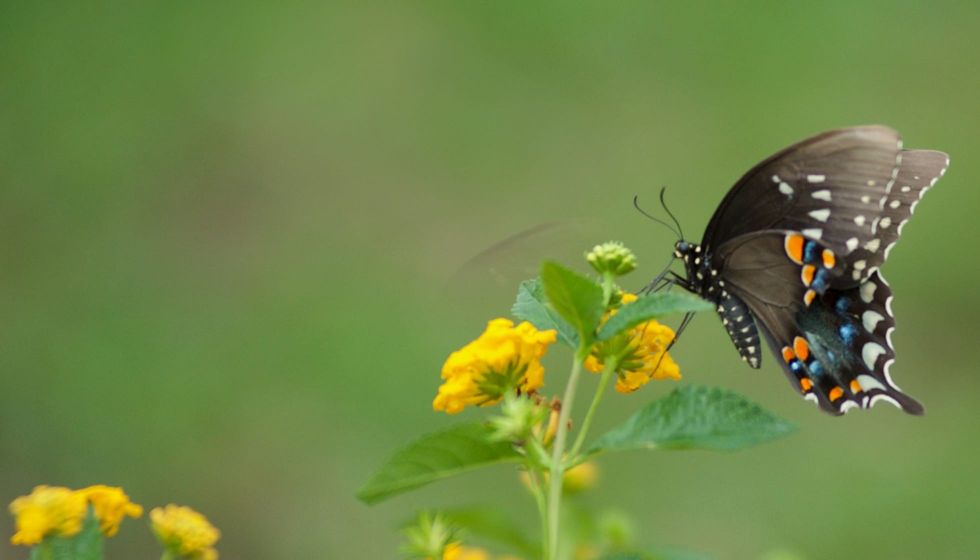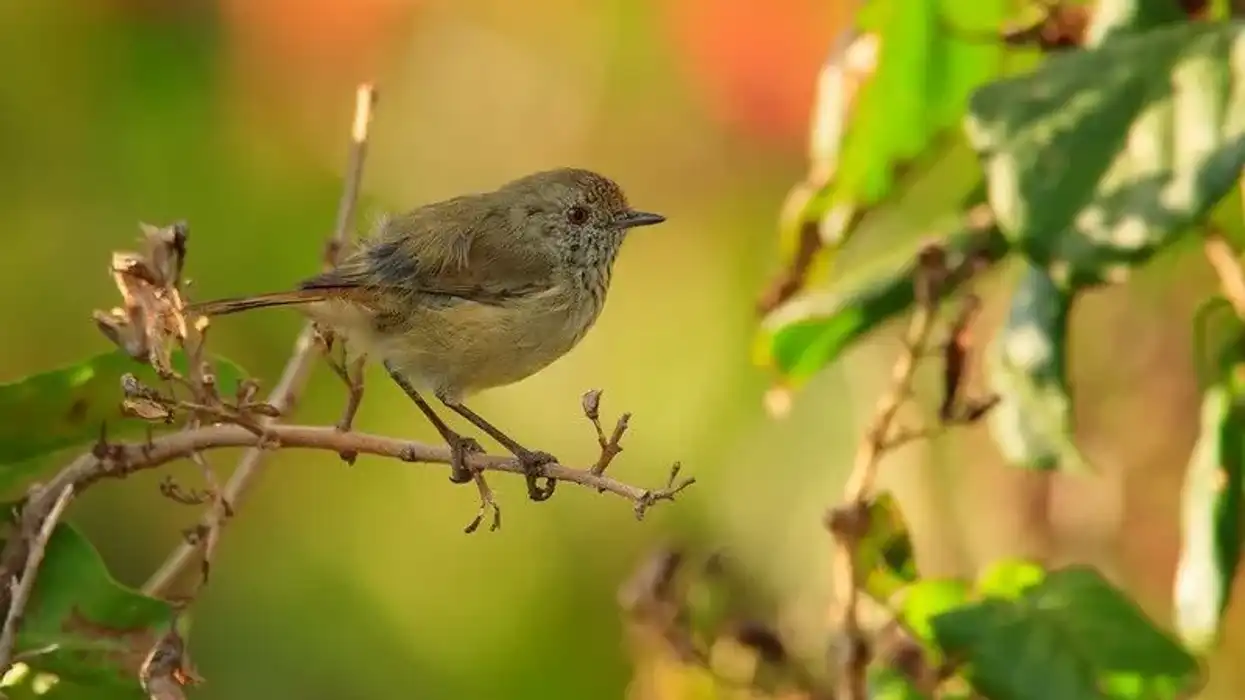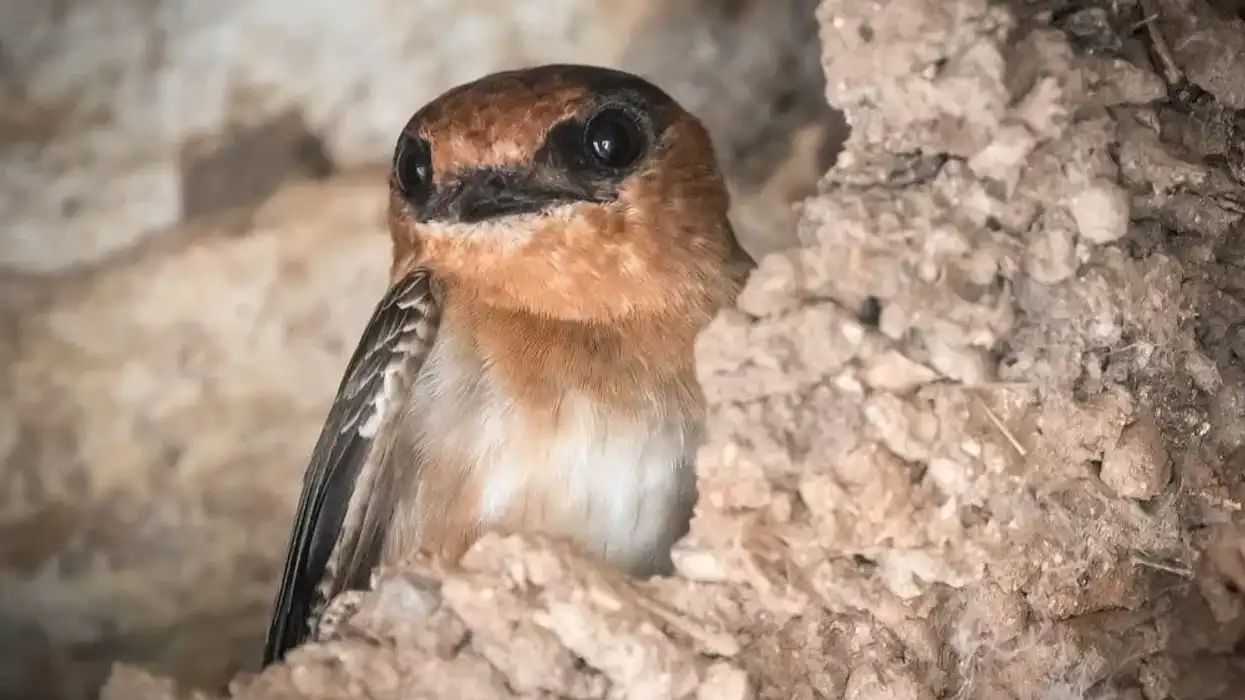The Spicebush Swallowtail Butterfly, also known as Papilio troilus scientifically, is commonly found in North America. It is also known as a green clouded butterfly.
The spicebush swallowtail butterfly gets its name from its most common host tree or plant spicebush.
There exist two subspecies of this butterfly, Papilio troilus troilus and Papilio troilus ilioneus which is common in the Florida peninsula. Other common host plant includes sassafras trees.
This Spicebush Swallowtail butterfly prefers to live in deciduous woods and wooded swamps, forest or woodland edges, pine barrens to fly low and fast through shaded or shelter-like areas or leaf shelter. In the adult butterflies, the upper part is black colored and has ivory spots on the bottom margins.
There is an orange spot on the costal margin of the hindwing which is a unique feature of this Spicebush Swallowtail butterfly. There are bluish-green scales on the upper part of the hind wings.
A spicebush swallowtail caterpillar is greenish in color and the underside is pinkish-brown in color and it resembles bird droppings, snakes, or tree frogs.
Breeding of the spicebush swallowtail butterfly happens in the summer months and mating happens with multiple partners. The spicebush swallowtail is quite an interesting and beautiful species to learn about and if you're interested, read about the Swallowtail and Eastern Tiger Swallowtail too.
Spicebush Swallowtail Interesting Facts
What type of animal is a spicebush swallowtail?
The Spicebush Swallowtail is a butterfly.
What class of animal does a spicebush swallowtail belong to?
The Spicebush Swallowtail butterfly or Papilio troilus as it is scientifically known belongs to the class of Insecta.
How many spicebush swallowtails are there in the world?
There has been no specific number of Spicebush swallowtail butterflies that have been recorded.
Where does a spicebush swallowtail live?
This Spicebush Swallowtail range includes the eastern United States and southern Ontario but can occasionally be found as far as the American midwest, Cuba, Manitoba, and Colorado. One subspecies of this butterfly is mainly found in the Florida peninsula.
What is a spicebush swallowtail's habitat?
When the spicebush swallowtail is still larvae, it stays on the leaf of the plant on which it is laid. As adults, these butterflies are found in areas with water and nectar and mates within this butterfly's range.
The spicebush swallowtail butterfly is mostly found in deciduous woods and woody swamps-type habitat where these butterflies can fly low and fast through shaded areas. Females are generally found in open plains while males are found in swamp regions. These can sometimes be spotted in the garden.
Who do spicebush swallowtails live with?
Sometimes, when the Spicebush Swallowtail butterfly is away from home, they can be found staying in groups.
How long does a spicebush swallowtail live?
This spicebush swallowtail butterfly is known to live for about 6-12 days.
How do they reproduce?
Breeding takes place in the summer months when there is ample food for the larvae. Both males and females copulate with several mates. The males patrol flyways on hilltops and host plant sites to begin the process of finding a mate.
When a female is spotted, males fly towards her and perform some brief courtship rituals. If the female is receptive, copulation takes place that lasts for about an hour.
A fertilized female will oviposit during the warm part of the day, and lays her eggs on young host leaves. No parental care is provided to the spicebush swallowtail larva or larvae or eggs. Like any butterfly, the spicebush swallowtail life cycle has four stages.
What is their conservation status?
The conservation status of the spicebush swallowtail butterfly is Not Extinct.
Spicebush Swallowtail Fun Facts
What do spicebush swallowtails look like?
In the adult butterflies of this species, the upper part of the forewing is mostly black and has ivory spots on the bottom margins or wing edges. The upper part of the upper surface of the hindwing has an orange spot or spots on the costal margin and this characteristic is unique to the spicebush swallowtail.
They also have a band of bluish scales in females and bluish-green scales in males on the upper portion of the hindwing.
It has a tail measuring 9-12 mm long at the bottom of the wing. The wingspan is around 3-4 in.
The larva or the caterpillar looks rather like bird droppings to begin with but is then green which resembles snakes with a pale yellow lateral line running on the caterpillar.
The underside is pinkish-brown and the abdominal segment has six blue spots outlined in black. The difference between the two subspecies is that the spots are blue in color on the hindwing of the Papilio troilus troilus while these spots are more yellow in color in Papilio troilus iloneous.

How cute are they?
These butterflies are considered cute because of their beautiful colors.
How do they communicate?
Females are known to use both visual and chemical cues to find host plants. Not much information is available about communication between individuals and it is confined to mating by finding mates visually and performing courtship rituals.
How big is a spicebush swallowtail?
The Swallowtail butterfly, in general, is considered to be a large butterfly as compared to other butterflies but there are no exact measurements of the spicebush swallowtail available.
How fast can spicebush swallowtails fly?
The exact speed of this spicebush swallowtail flight is unknown but the wingspan of the spicebush swallowtail is around 3-4 in. The flight is considered to be slow and thus, it is easy to catch.
How much does a spicebush swallowtail weigh?
The weight of a spicebush swallowtail butterfly is unknown.
What are their male and female names of the species?
There are no specific names for a male and female of the species.
What would you call a baby spicebush swallowtail?
A baby spicebush swallowtail is known as a spicebush swallowtail caterpillar or larva. Spicebush swallowtail caterpillar facts include that they are green with a yellow lateral line.
What do they eat?
The spicebush swallowtails' larvae feed on the leaves of the aromatic trees and shrubs in the family Lauraceae. The primary hosts include sassafras and spicebush.
They are also known to feed on a redbay, camphor tree, and sweetbay. Adults feed on nectar and prefer to feed on honeysuckle, clover, and thistle flowers. They also drink nectar from jewelweed, milkweed, dogbane, and sweet pepperbush.
Are they dangerous?
While some species of the swallowtail butterfly are dangerous as they feed on poisonous host plants, there have been no other dangerous effects of the spicebush swallowtail butterfly recorded or observed.
Would they make a good pet?
While not much information is available about these butterflies as pets but it should be kept in mind that these butterflies have a short lifespan. This butterfly is kept as a pet because people like to observe the spicebush swallowtail life cycle. These can be included in your garden.
Did you know...
Though no parental care is provided to eggs and larvae, the female does invest in their babies or young by producing nutrient-rich eggs that help the larvae to develop until hatching. They also choose the host plants carefully to make sure the survival of the young.
Spiders, birds, and insect predators like dragonflies and robber flies eat spicebush swallowtail butterflies, and thus, the spicebush swallowtail caterpillar and larva have evolved to mimic snakes and bird droppings.
The Spicebush swallowtail chrysalis is either green or brown which is based on the length of the light. It has been recorded that when days are shorter, caterpillars will form a brown chrysalis and overwinter as pupae.
The actual size of spicebush swallowtail caterpillars' eyes is that of a pinpoint and the eyespots are much bigger.
Is a spicebush swallowtail caterpillar poisonous?
Spicebush Swallowtail caterpillars are considered to be harmless.
What is the host plant of the spicebush swallowtail larvae?
The spicebush swallowtail host plant includes Spicebush, Lindera Benzoin, which is the scientific name of this plant or tree, and white sassafras or Sassafras Albidum.
Here at Kidadl, we have carefully created lots of interesting family-friendly animal facts for everyone to discover! Learn more about some other arthropods including the purple emperor butterfly, or monarch butterfly.
You can even occupy yourself at home by drawing one on our swallowtail butterfly coloring pages.










